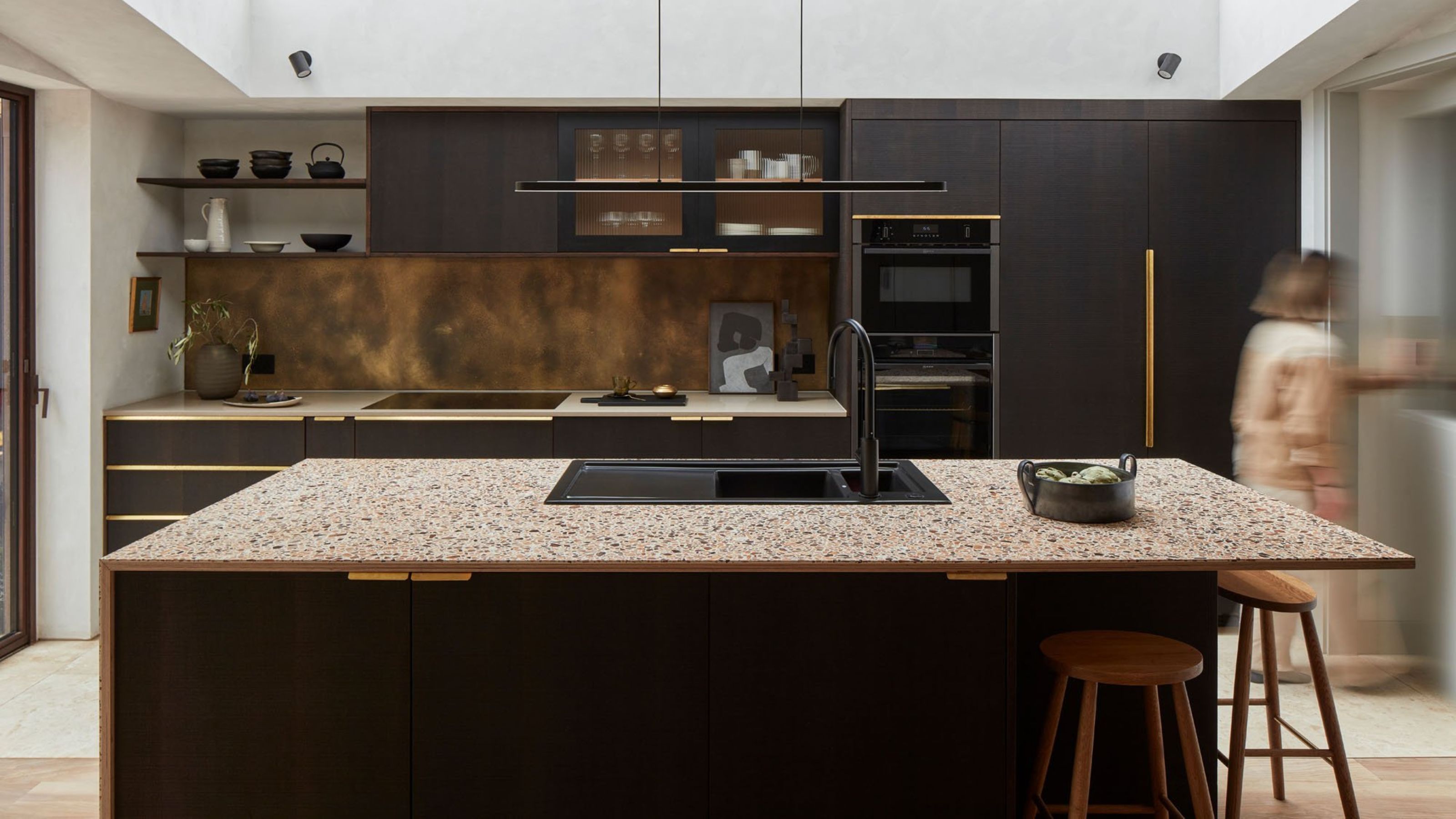
With growing attention placed on the environmental impact of the products we create and the interiors we design, sustainable material trends now lie at the heart of the conversation. While the composition of a piece of furniture or home textile might have previously been an afterthought, today it is front and center.
And while longevity plays a huge role in the creation of furniture and sustainable homes, the acceptance of biomaterials with shorter life cycles is also key. “With a greater understanding of sustainability, consumer and specifiers will be happy with wholly biobased solutions that may not last 10 years, but will instead provide us healthy, clean interior living for three years,” explains Purva Chawla, founder and partner of MaterialDriven, a global design agency and materials library. “At the same time, technical innovation will also drive the performance of biobased materials to match synthetic counterparts, too.”
As interiors and homes become future-focused thanks to cutting-edge technology and innovative sustainable product design, the dialogue around eco materials has long surpassed recycled glass vase or a reclaimed wooden chair.
Today, it's centred on a material’s end-of-life, its regenerative qualities, and how it contributes to the home as a space that enhances and nourishes our health. And in prioritising these values, the aesthetical allure of our homes is in no way being compromised anymore, thanks to the ingenuity of designers who understand the importance of design appeal, and its role in drawing us towards more sustainable material trends.
1. Recycled Surface Materials
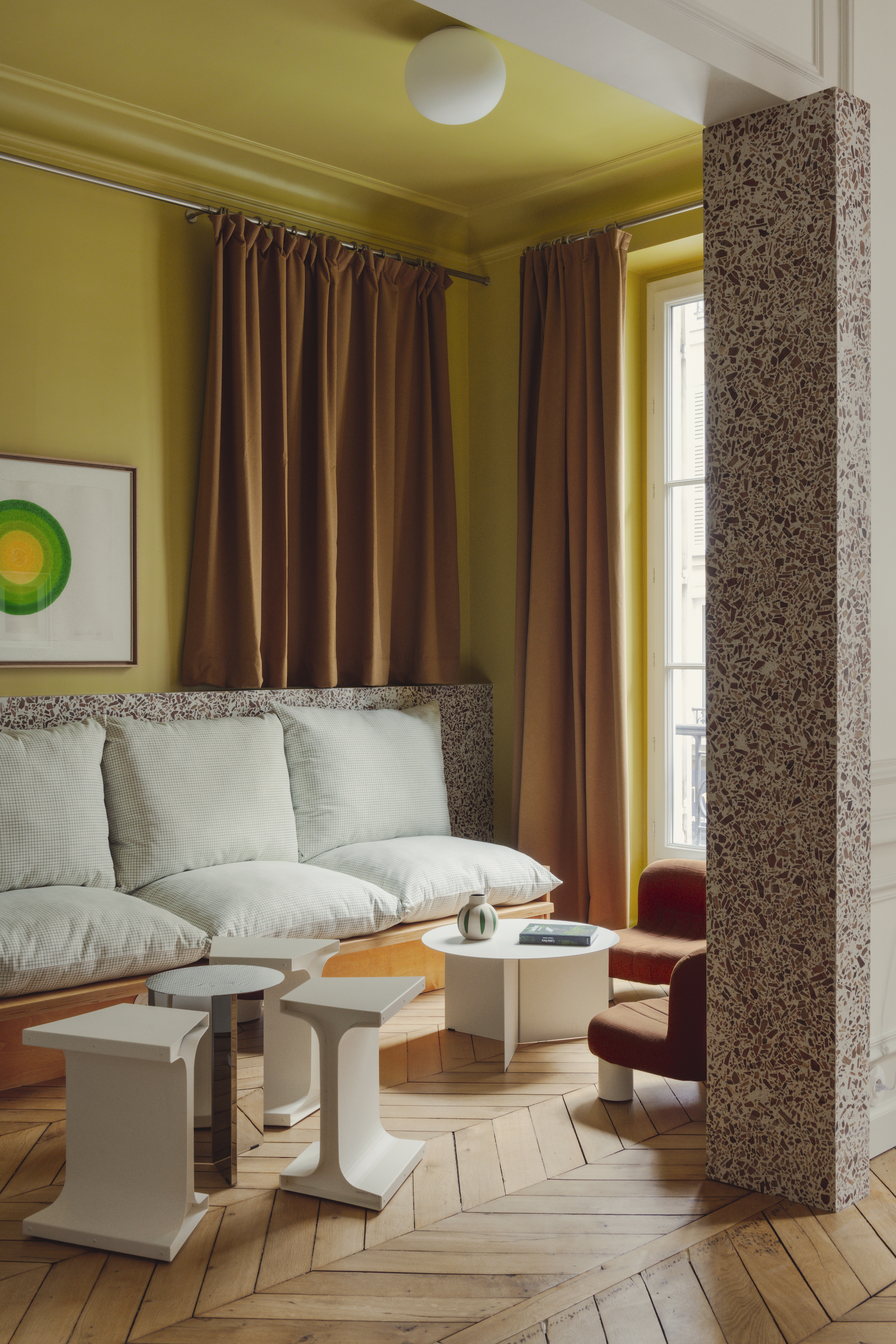
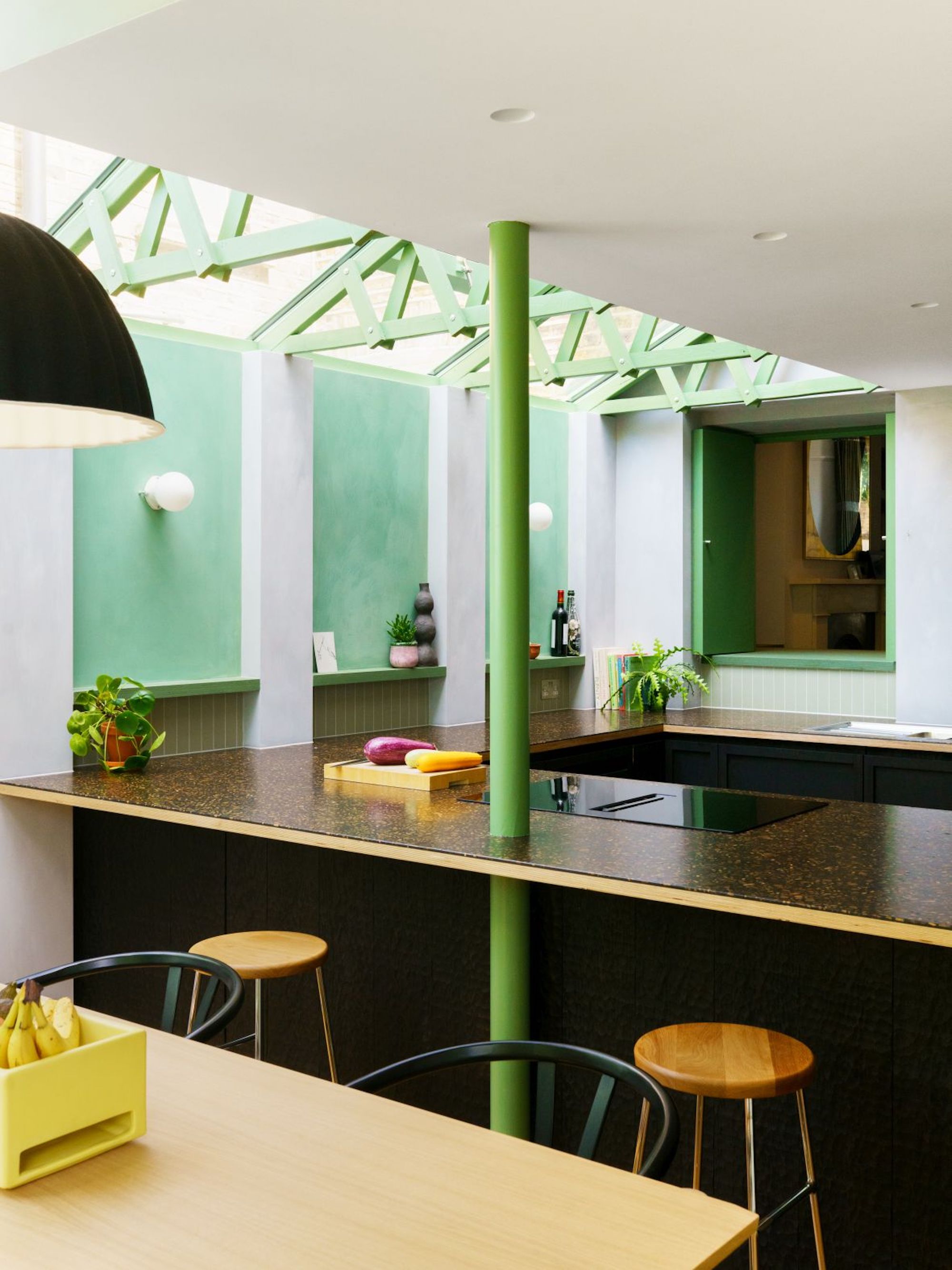
With recycled surface materials growing in popularity over recent years, designers and studios are taking them to a new level in both appearance and materiality.
Foresso, a material dubbed ‘the timber terrazzo’, is crafted in the UK from wood waste and can be used in multiple applications from worktops to furniture, tabletops, and even wallcoverings.
Produced in sheet form from timber offcuts, wood dust, mineral powders, and a non-toxic, formaldehyde-free binder, the sustainable material is less reliant on high-energy components such as cement, which is used in traditional terrazzo finishes.
With its low-carbon footprint and circular production values being obvious benefits, designers are also selecting the material for its longevity, durability, and aesthetical beauty, the studio’s director, Conor Taylor, explains.
“If maintained correctly, it can have a projected lifespan of up to 50 years,” he says. “By comparison recycled plastic surfaces need updating 5-10 years on average, so almost unintentionally, the result is more cost-effective, too, as it needs updating far less frequently.”
“We wanted a solution that had the warmth of timber but with the resilience of a harder material,” explains Matt Barnes, director at CAN Architects of a residential project in London where they selected the material for a kitchen worktop, “and Foresso perfectly fits the mould for this.”
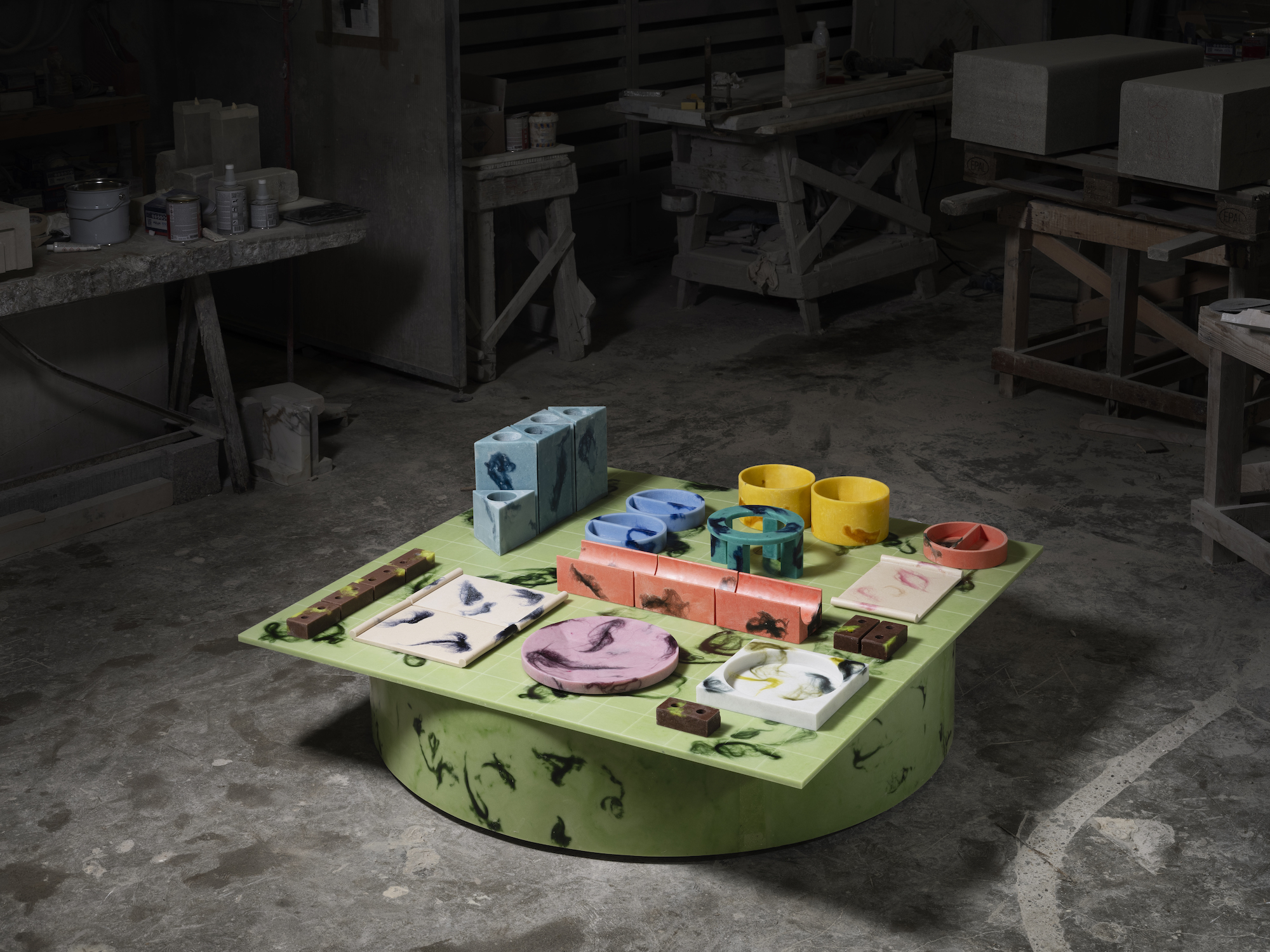
Another surface material that is elevating the use of recycled ingredients is Marwoolus®, a patented composite material developed by Italian designer Marco Guazzini, back in 2016.
Developed from locally sourced recycled marble dust, wool fibers, and a bi-component binder, Marwoolus® alludes to the natural beauty of marble through the placement of the wool fibers within it, while the color is derived from the variety of stone used.
At this year’s edition of Matter and Shape, the Paris-based collectible design showcase, Marco Guazzini presented Motherboard — a series of objects that elevates the material to new heights. Applicable to many spaces and settings, the material’s bespoke customization has been a huge draw for many interior designers and architects, he states.
“This allows it to blend into very different contexts, whether through bold contrast or harmonious integration with the project’s color palette,” Marco adds. “The final effect is that of a true stone, similar to marble, but lighter, fully water-repellent and more flexible. And, having worked with the material for over ten years, I can confidently say it maintains both its color and surface quality over time.”
2. Algae
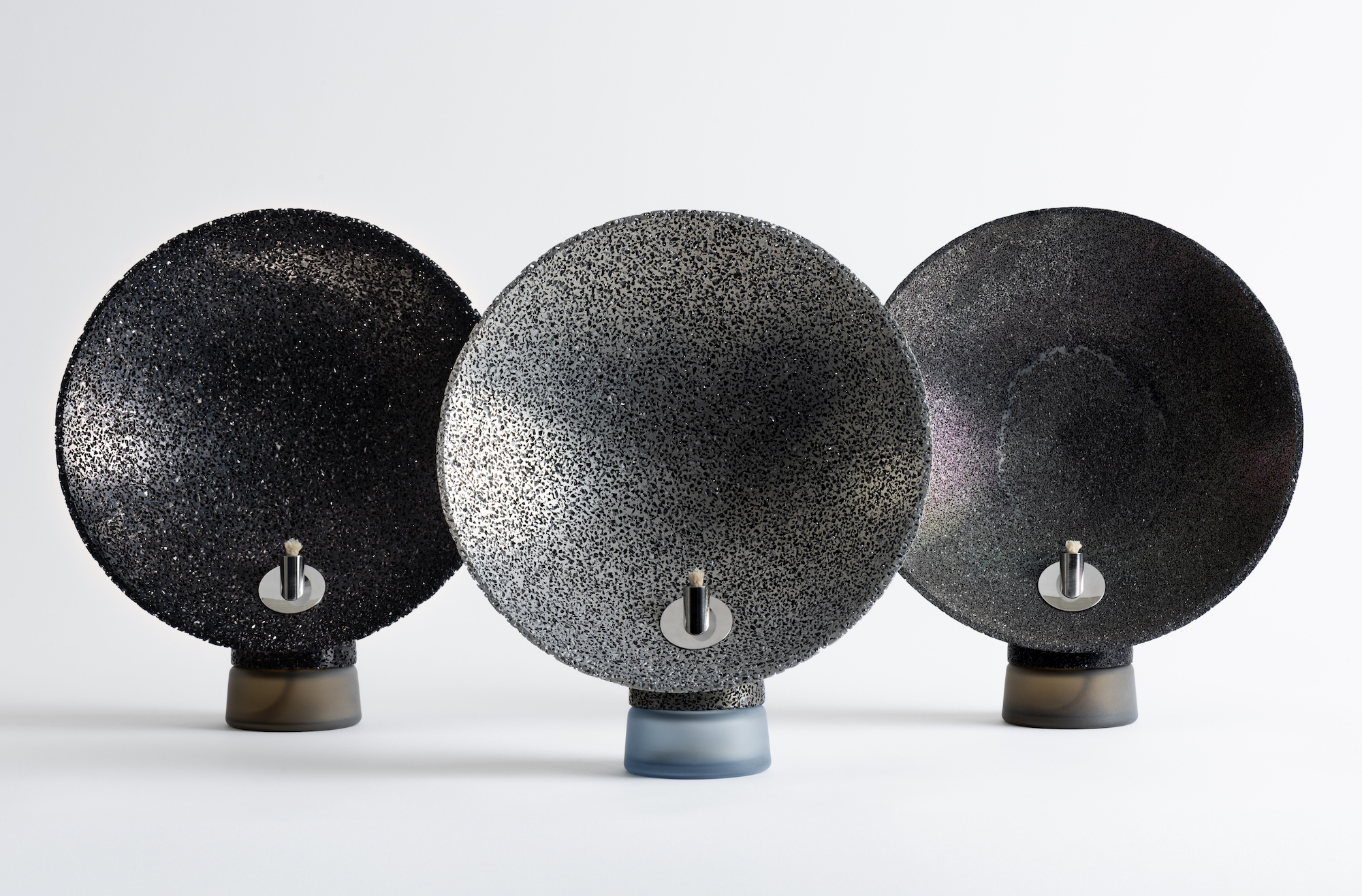
Algae is one of the most renewable natural resources available thanks to its fast growth rates and inherent natural qualities. Many designers and creators are reimagining the grown bio-material in different ways, leading to its emergence as one of the latest sustainable material trends.
Used as an alternative to petroleum-based inks for both textile printing and artworks, design studio LAYER presented a new collaboration with Scandinavian design house, Muuto, at this year’s Milan Design Week.
Using algae oil as a power source, they unveiled LIGHT, a sculptural, contemporary oil lamp that merges tradition with contemporary, future-focused design. “This design is about creating access to beauty and utility when you need it most — in moments of uncertainty, when the grid can’t be relied on,” says the studio’s founder Benjamin Hubert.
“It is also crafted from salt-cast aluminium to reduce material use and reflect the flame’s glow," he adds. "The result is a poetic but practical object — one that reconnects us to essential resources while providing dependable, off-grid illumination in an increasingly fragile world.”
3. Cork
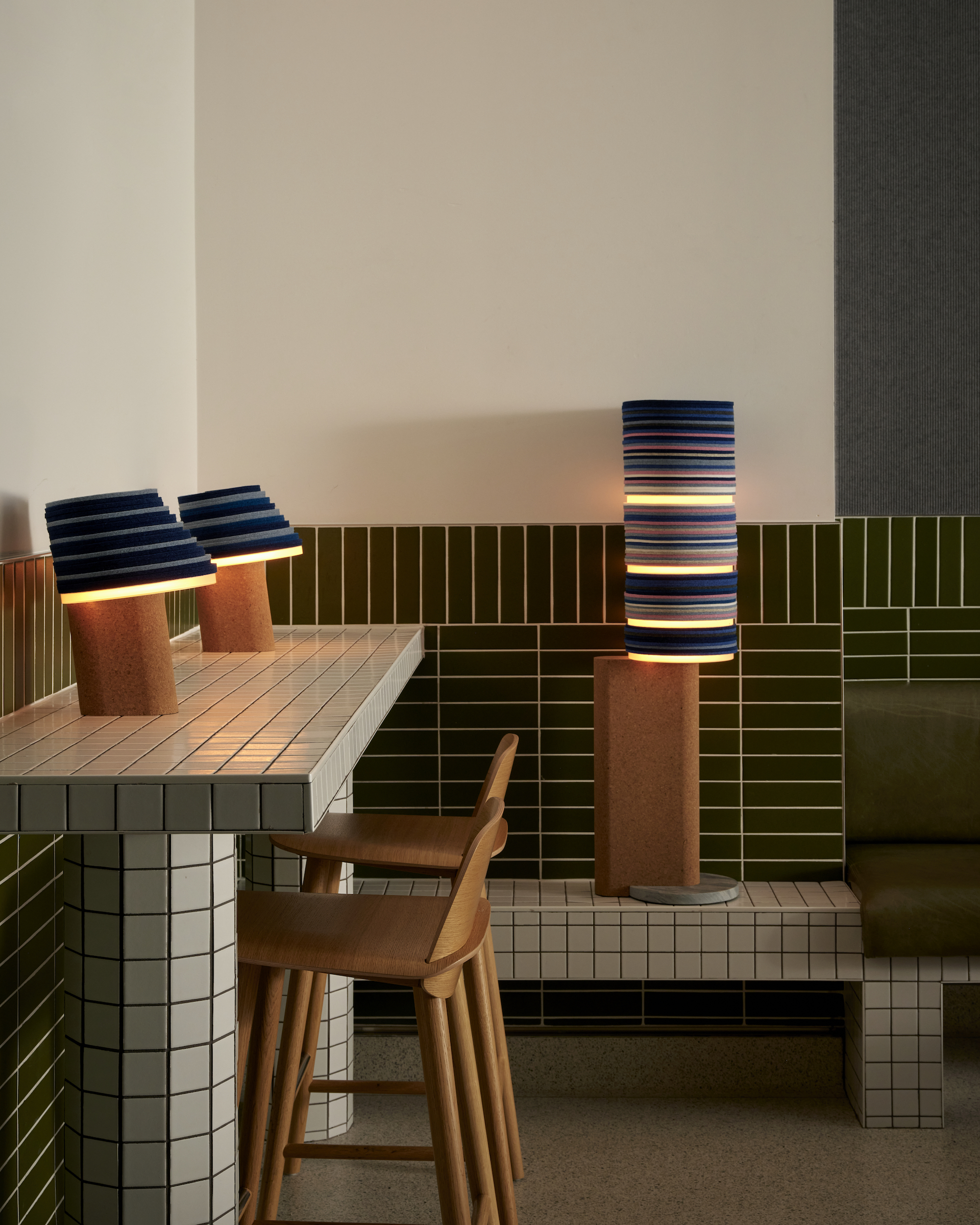
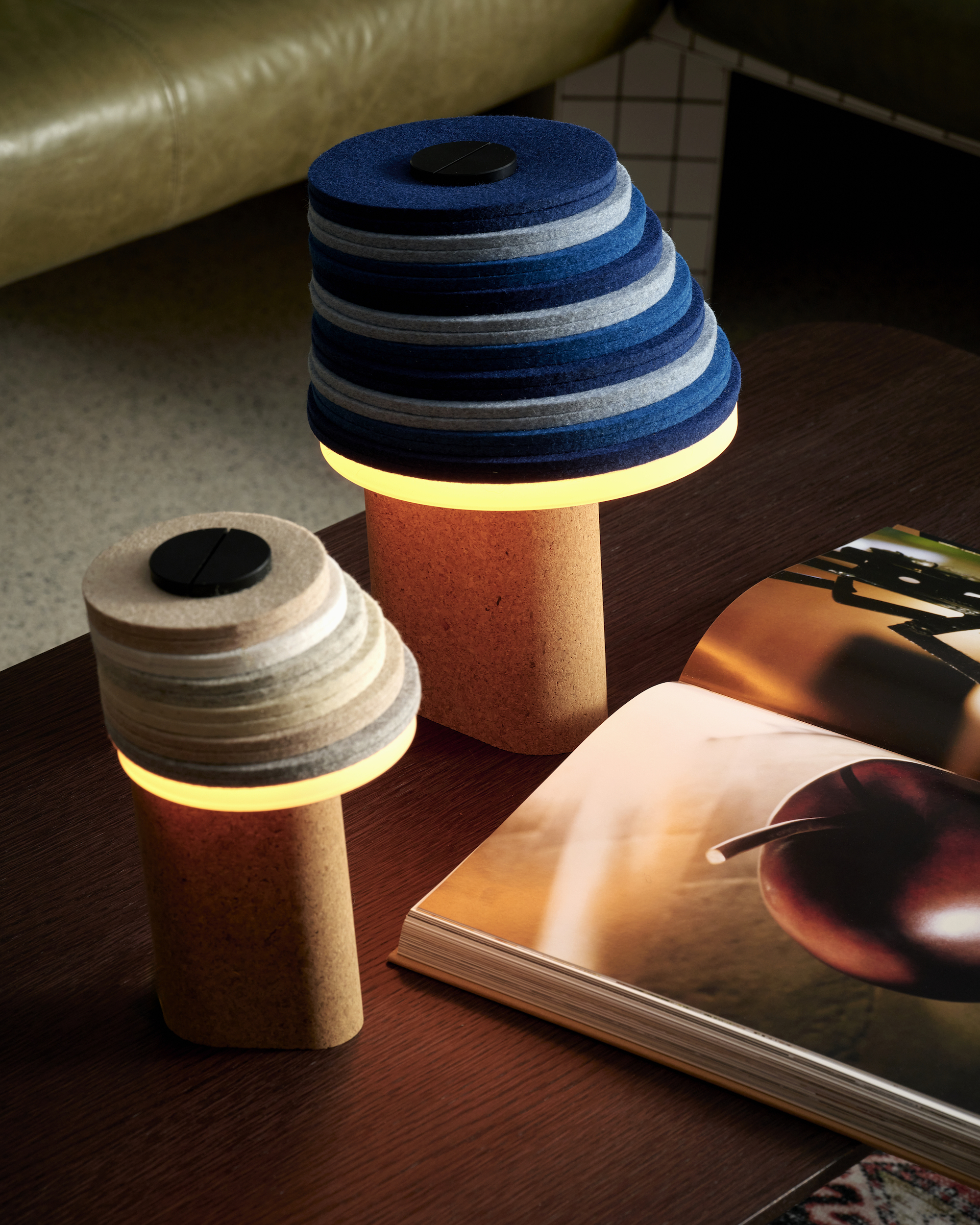
In the 1970s, cork was a common feature in homes across the world. Predominantly seen as cork flooring, its application became outdated, and homeowners fell out of love with the material.
However, in more recent years, its regenerative qualities have reinstated its presence firmly back into the world of interior design and sustainable material trends. And, as the material is reimagined through a fresh lens, it is continuing to garner a newfound appreciation for its aesthetic.
At Milan Design Week, architectural firm Rockwell Group partnered with Corticeira Amorim to present ‘Casa Cork’ — an immersive installation celebrating the material. Founder and president of Rockwell Group, David Rockwell, says the studio’s interest in cork surfaces has been largely down to its aesthetic properties and applicability within the built environment.
“It could shape-shift for so many purposes,” he says. As part of the installation, David Rockwell debuted his new lighting collection, created in partnership with Stackabl. The solid cork bases of each design are constructed from 100% post-industrial cork, left over from the processes of wine stopper production.
“With these lamps, we’re bringing surprising material innovation into the home, office, or hospitality environment,” he continues. “It is also excellent for providing acoustic insulation because of its cellular structure while also being water-resistant, hypoallergenic, and mold-resistant, making it a great choice for indoor air quality. Finally, it just looks beautiful and, like wood grain, is unique with a soft, supportive feel.”
4. Mycelium "Leather"
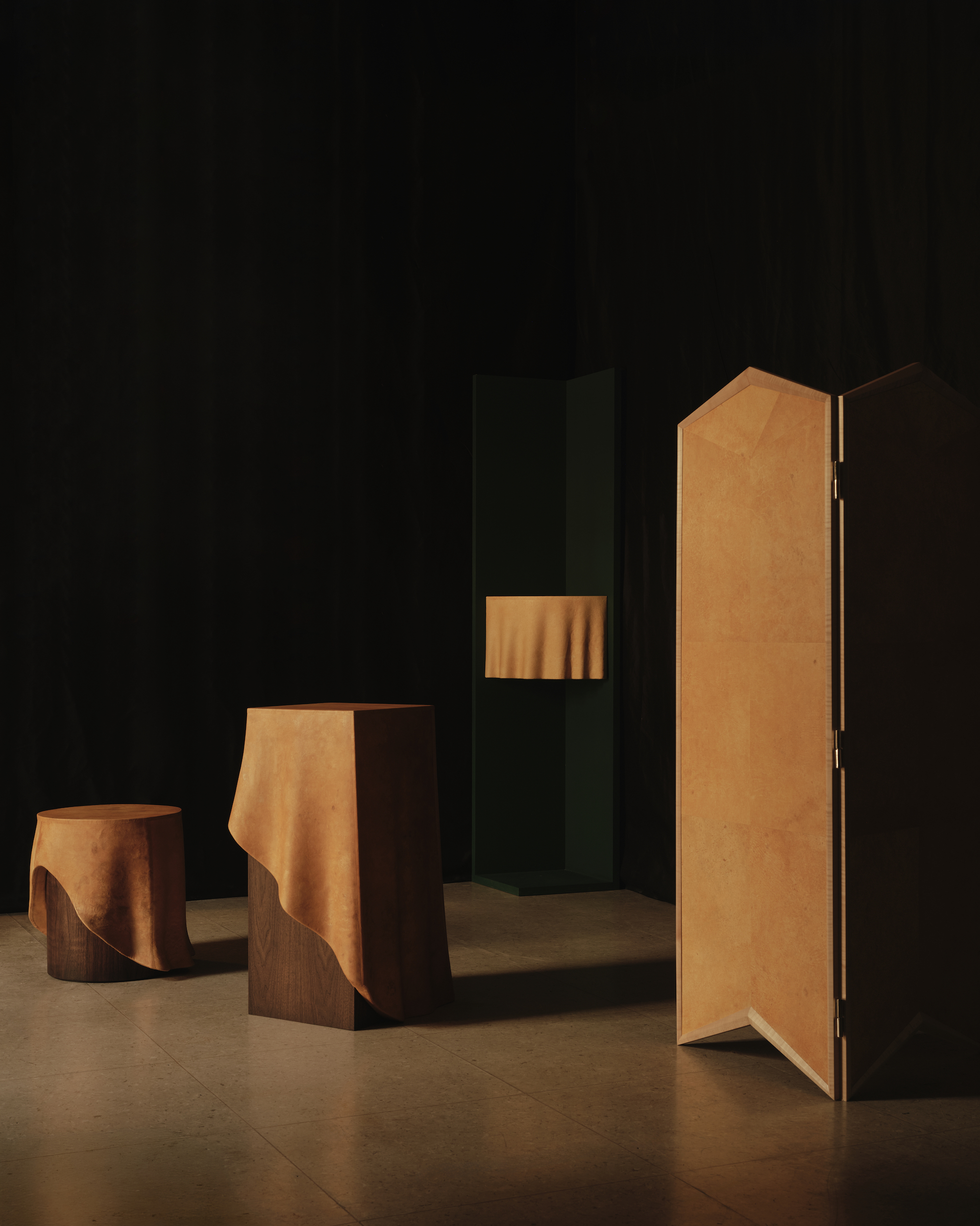
Mycelium has been a common ingredient in the development of biomaterials over recent years. However, again, thanks to the imagination of thought-leading designers and studios, its aesthetic and application is rapidly evolving and making waves in the world of sustainable material trends.
Showcased at Milan Design Week, Studio TOOJ, the Stockholm-based design studio founded by Ashley & Johan Wilén-Jong, presented it’s DUK Series — a sculptural collection of furniture made using Reishi, a mycelium-derived material engineered by biotechnology company MycoWorks.
Inspired by surrealist forms, the talented duo says the series is a study of illusion and material transformation. Consisting of a floating corner table, side table and pedestal, the material is draped over solid structures resulting in theatrical design statements.
“The series demonstrates that high-end interiors and sustainability are no longer mutually exclusive,” they say. “Traditionally, luxury has been associated with rare, resource-intensive materials however, we are proving that innovation and tradition can coexist beautifully.”
Seeing this unique and sculptural application offers a glimpse into how Reishi could be used more widely in furniture production, not only elevating a design’s sustainable values but adding sophistication through its organic and tactile appeal.
5. Bacterial Cellulose Fiber
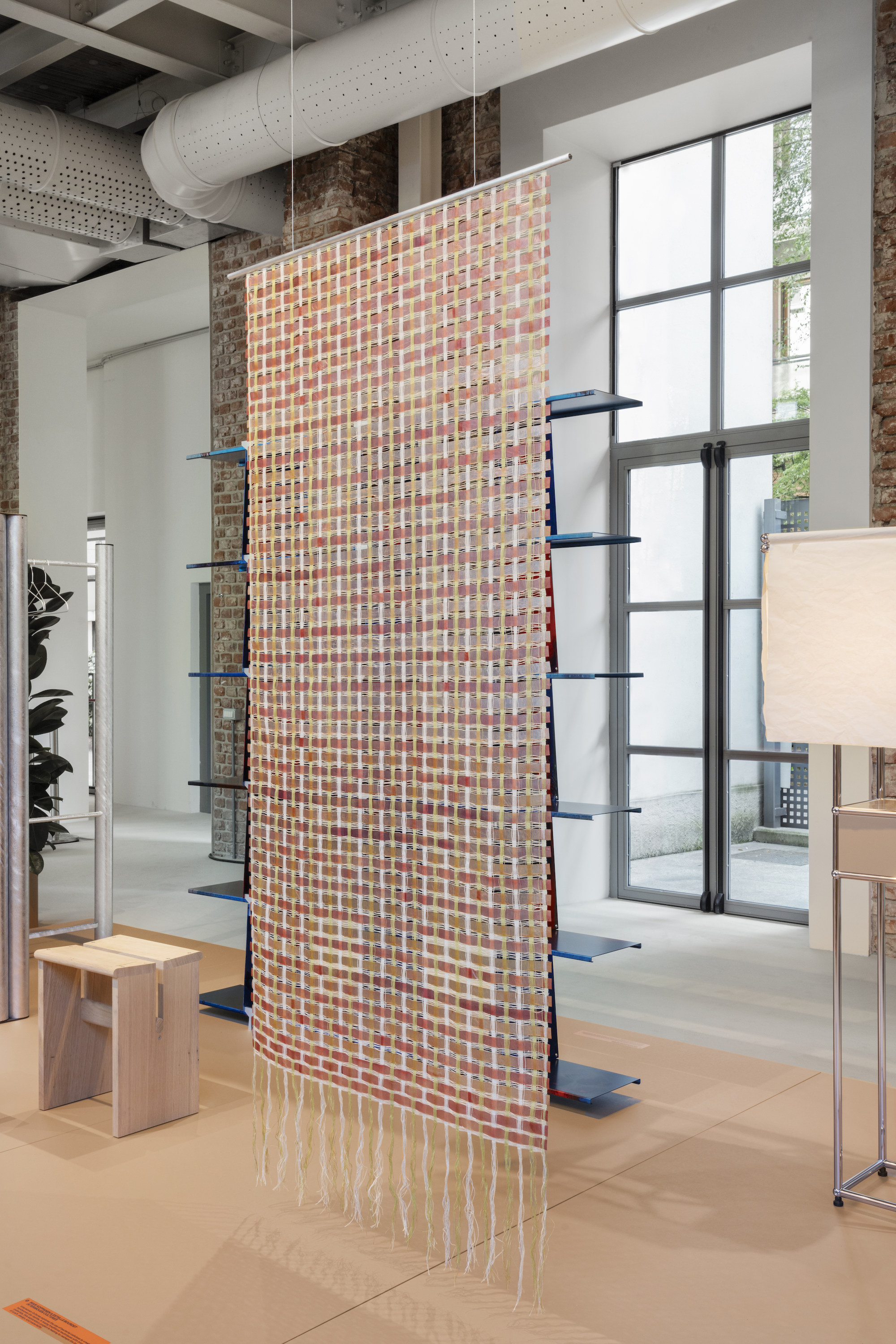

The production of textiles for interior use has also been a study of adaptation in recent years. With factories and experimental studios turning to biobased ingredients, there was one project at Milan Design Week this year that caught our eye.
Titled 'Interwoven Cultures', Finnish designer Mari Koppanen partnered with Swiss textile weaver Estelle Bourdet to explore the use of bacterial cellulose within woven textiles.
Presenting a woven wall hanging within the House of Switzerland showcase, it sparked dialogue around its future potential as a sustainable material trend, and how interior designers could work with it on a commercial level.
With a leather-like feel, the designers explain that it can be shaped into various forms while being purer and stronger than plant cellulose — a more widely used ingredient within textiles today.
“We hope to explore its scalability, material applications, and aesthetics while continuing material research and development in parallel,” says Estelle, while explaining how artists and designers are working with the material due to its ease of cultivation and distinct visual appeal.
6. Plant-Based Natural Paints
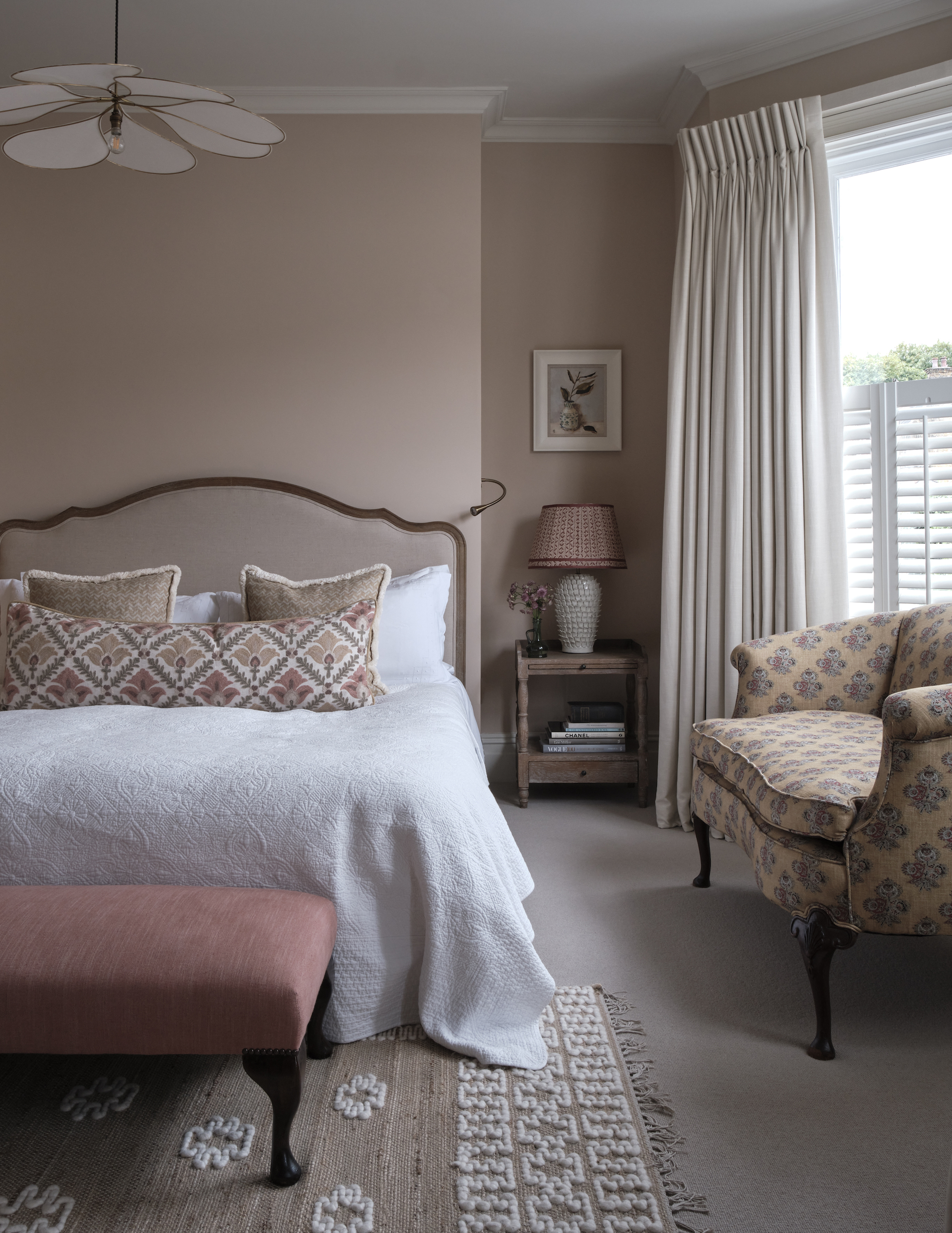
Paint is arguably one of the most complex categories when addressing sustainable material trends. With vague terminology and a lack of legislation leading to an abundance of greenwashing in interior design, it can be challenging for consumers to make fully informed decisions.
According to Edward Bulmer, interior designer and founder of his eponymous plant-based, eco paint brand, the key to transparency is by clearly listing every single ingredient used.
“Because paint makers don’t have to tell us what is in the paints they make, we are usually told about the water or a virtue signalling ingredient like ground-up olive stones,” he explains. “It could be as straight forward for the consumer as a fully declared list of ingredients, but of course that might not be as appealing. For instance, why admit to the use of plastic (that will ultimately break down into microplastics), when you can make claims like ‘no intentionally added microplastics’.”
With legislation and transparency key factors in the future of sustainable paint, interior designer Polly Ashman also says how it isn’t just the sustainability she is drawn to when using Edward Bulmer Natural Paint. “It has an exceptional combination of historical authenticity and rich, natural pigmentation,” she says. “What sets it apart is the depth and character of the colors. The pigments are soft and react beautifully to natural light, adding a subtle dimension to the space.”
And, with the obvious improvement in air quality that comes from using sustainable wall finishes like this, what's not to love?
As designers focus on bridging the gaps between design-led aesthetics, functionality, quality, and sustainability, the spaces we create will inherently reflect these changes, too.
And, as witnessed, the front-line of interior design today has sustainability inherently embedded from the outset of the planning stages, while simultaneously prioritising our health and well-being through a sensorial approach.
Through the development of pioneering biomaterials, the sector is set to evolve even more rapidly as innovation steps up. “Companies are working hard to match both price and quality, but there are challenges in the creation of new biomaterials,” says Purva Chawla. “Many developers face scalability issues due to the complexity of their raw materials or supply chains and machinery being specific to their product, while others are forced to blend in 15-20% of synthetic materials as binders to meet the needs of market applications and to be durable enough to be certified and specified."
However, incremental improvements are happening, she adds, which will make sustainable material trends easier to specify. With all this development in progress, it is safe to say the next decade of interior design will be an exciting era of progression with new sustainable material trends leading the charge in shaping the future of our homes.







